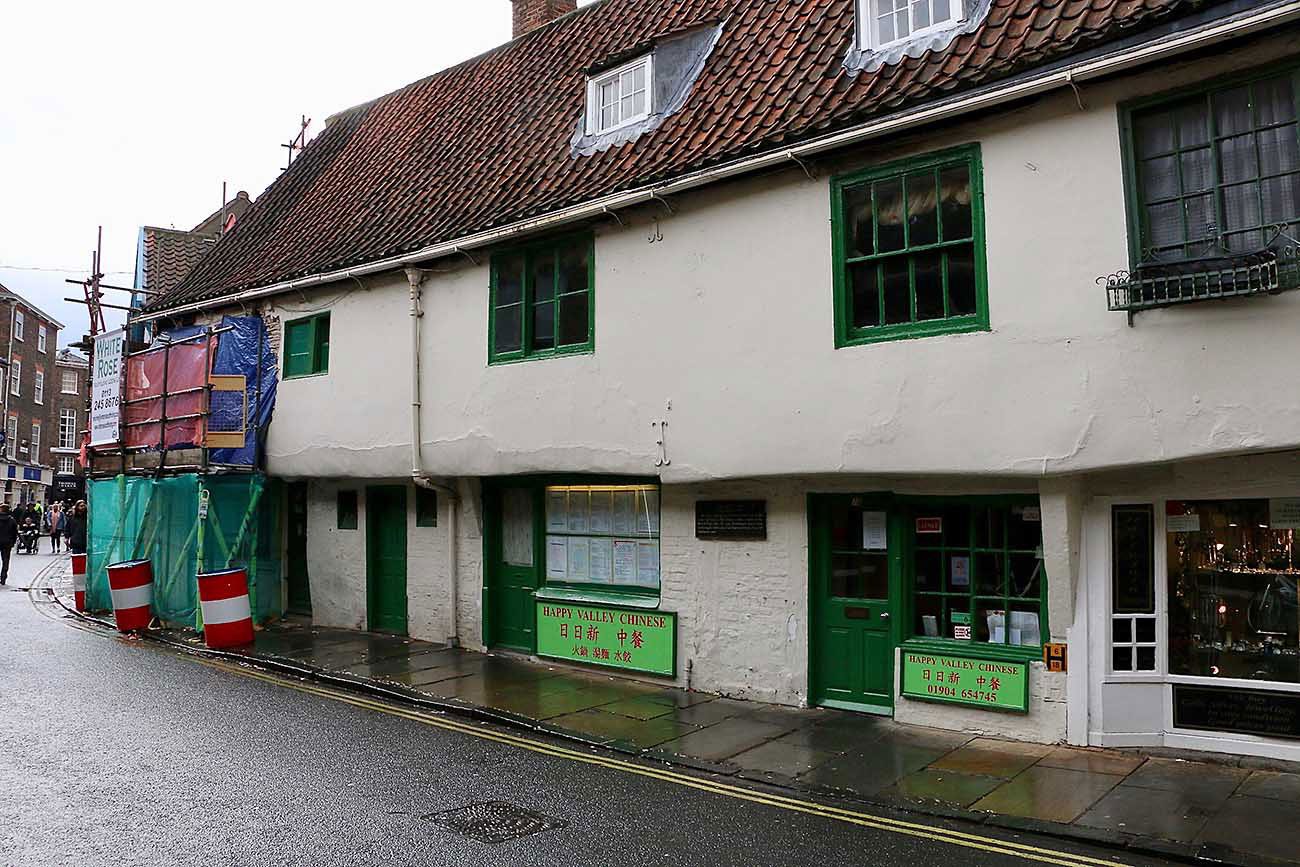Seven centuries old, their historic value is impossible to calculate. But the ancient houses on Lady Row are at risk of being lost forever.
That’s the warning from Historic England today as it puts Lady Row on its ‘At Risk Register 2017’.
Fortunately there are plans in place to save this irreplaceable corner of York.
Lady Row, sometimes known as Our Lady’s Row, is the group of whitewashed medieval houses on Goodramgate.
The Grade I listed property is thought to be the oldest surviving timber-framed building in York. Built in about 1316, they are also England’s earliest example of houses with overhanging jetties, the upper floor wider than the lower.
Extensively decayed

Historic England’s At Risk Register is an annual snapshot into the state of England’s most valued historic places.
The register draws attention to the sites across England that are “at risk of being lost as a result of neglect, decay or inappropriate development”.


It has added Grade I listed Lady Row to the register for the first time this year.
The property has been in the wars of late. In December 2015, part of the exterior of one of the upper storeys fell into the street due to weathering.
And traffic has caused problems too. Historic England said the building “has been hit by a vehicle on more than one occasion”.
“As well as the impact damage the timber-framing is extensively decayed,” the report states.
A spokeswoman for Historic England told YorkMix:
It is our understanding that the building at Lady Row has been hit by a vehicle on more than one occasion and the loss of the render has revealed the extent of decay to the buildings timber framed structure.
The building has been supported by scaffolding and cordoned off from the street since 2016 and City of York Council has requested the owner to undertake urgently needed repairs to ensure the future of this Grade I building.
Historic England’s specialist adviser went out and advised on the extent of the problem and how this could be addressed.
The building was added to the Heritage at Risk Register earlier this year when there was no progress on the repair/reinstatement work.
Fortunately the council and Historic England have now met a contractor on site who has been appointed by the owner to complete the repairs to allow the building to be reoccupied and the street to be fully opened.
She added: “This is a success story and once the work is completed to the satisfaction of City of York Council the building will no longer be at risk and can be removed from the national register.”
Historic England has a track record of turning things round.
This year the 18th century Tuscan Temple at Duncombe Park has been taken off the list after being repaired.
Specialist advice

“It is important that we continue to preserve heritage sites across York and England,” he said.
“Our Lady’s Row is oldest row of houses in the city, dating back to the medieval era, and is a historical and cultural point of interest for York.”
The interim executive member for economic development and community engagement added: “Historic England and City of York Council have provided ongoing specialist advice and assistance to the building owner to secure appropriate repairs for this important site.
“Contractors have been appointed and repair work is currently underway. It is expected the building will be removed from the Heritage at Risk Register in 2018.”
History of Lady Row

Construction was basic – the dwellings are made of plastered timber framing with curved pantiles on the roof.
The houses sit in front of Holy Trinity Church, almost obscuring it from view. This is because they were built in the original churchyard and the rental income they generated went towards the church’s running expenses. Some of the early tenants were priests from Holy Trinity.
Over the centuries the buildings have been put to various uses. For a time in the 18th and 19th century two of them were pubs – one called the Hawk’s Crest, the other Noah’s Ark.
